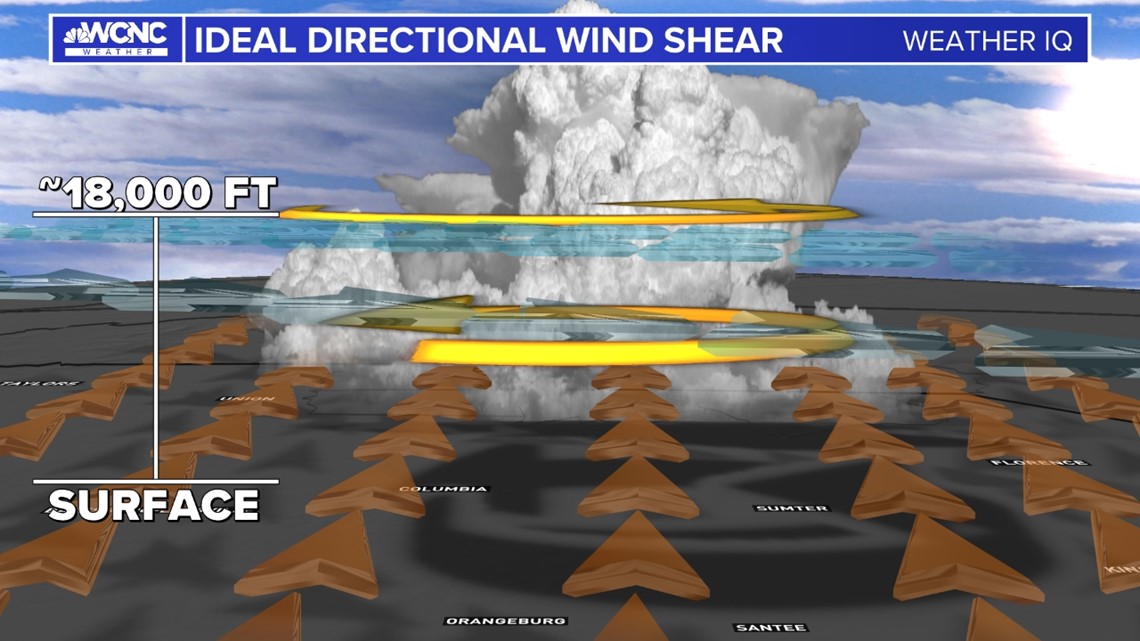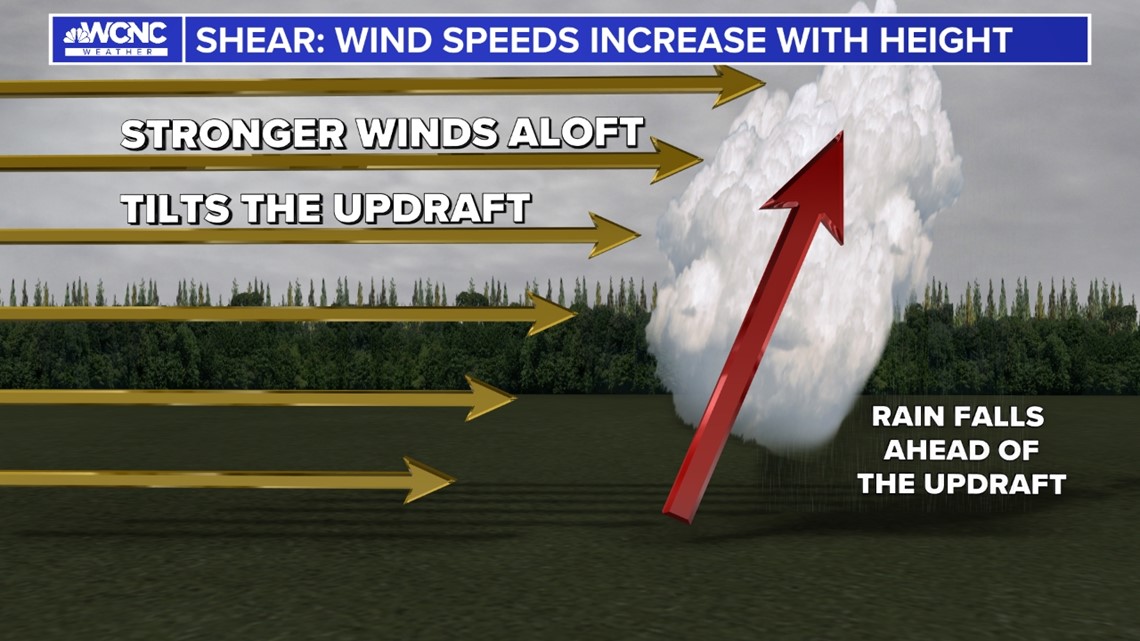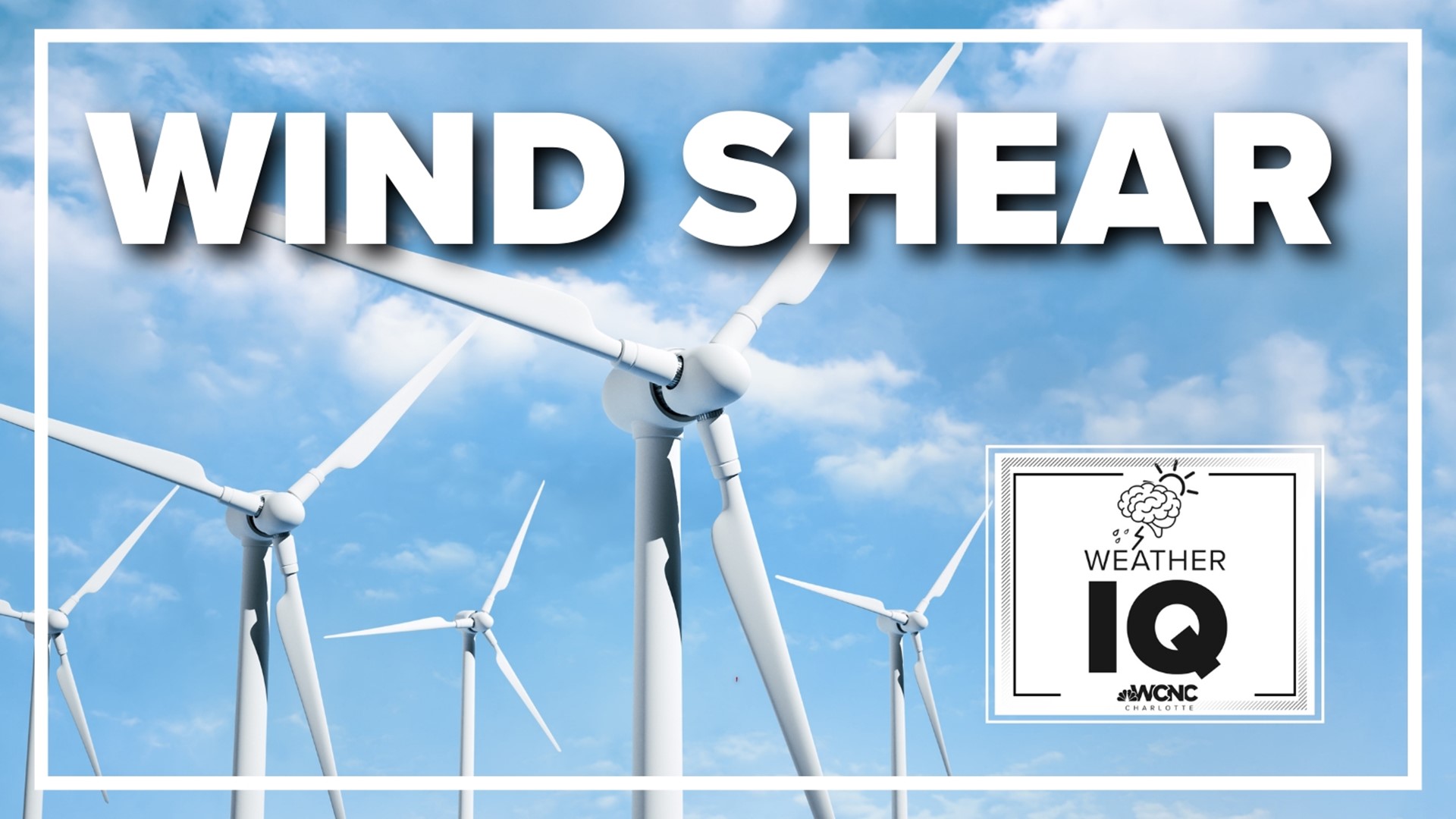CHARLOTTE, N.C. — Wind shear is not a term many of us know or will ever use, but for a meteorologist, it's an important parameter to consider when forecasting and tracking storms.
The presence of a high wind shear increases the severe threat and the chance for tornadoes.
What is wind shear?
Wind shear is when winds are changing direction or speed with altitude.
There are technically two types of wind shear: Speed shear and directional shear.
Directional wind shear:
When combined with lift and atmospheric instability, directional wind shear is the main ingredient for tornadoes.
When there is a change in wind direction of about 90 degrees between the surface and 18,000 feet, there is wind shear present that is ideal for tornado development.
Here is an example of when wind direction could change with atmospheric height: At the ground, the wind is carrying in moisture from the south while mid-level winds are flowing from the west. If a thunderstorm develops in this environment, it can cause the storm to rotate. Under the right conditions, that rotation could developer a tornado.


When a single thunderstorm is rotating, it is called a supercell. (We have another Weather IQ all about supercell thunderstorms.)
An important note: Not all rotating thunderstorms produce tornadoes. However, the wind shear could still fuel a thunderstorm to become more severe.
This twisting of the storm drives moisture higher into the sky. This enhances the thunderstorm and thus creates more hail, more rain, and more frequent lightning.
Speed wind shear:
Another scenario for wind shear is speed sheer. Speed sheer occurs when winds increase speed as the atmospheric elevation increases.
When there is a high presence of speed shear, the wind will tilt the storm's updraft. This forces the rain and hail to fall ahead of the main storm. This setup allows the storm to be supported for longer.
When there is a high level of speed shear, thunderstorms can last for hours.


Other wind shear effects:
Wind shear is also the cause of turbulence during a flight because of the dramatic change in wind pressure.
Wind shear is also a factor in the tropics during hurricane season. As it relates to tropical cyclones, wind shear is actually a good thing. Tropical depressions, tropical storms, and hurricanes can weaken and break apart because of wind shear.


Contact Chris Mulcahy at cmulcahy@wcnc.com and follow him on Facebook, Twitter, Instagram and TikTok.

